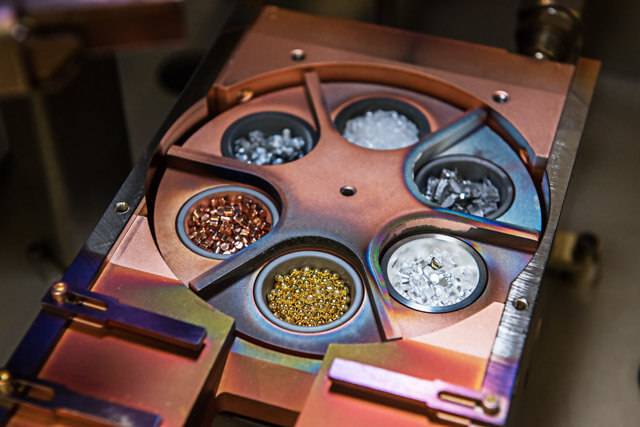Thermal evaporation or vacuum evaporation is the vaporization of the evaporation material by heating to a certain temperature, so that the vapor pressure becomes appreciable, and the surface or molecules are lost from the surface in the vacuum. Vaporization can come from the surface of a liquid or from the surface of a solid. The authors arbitrarily define 10-2 Torr as the equilibrium vapor pressure above which the free surface evaporation in the PVD-type vacuum is sufficient to cause vacuum deposition to occur at a reasonable rate. If the evaporating material is a solid at this temperature, the material is said to be sublimed (e.g., chromium, magnesium), and if it is melted, it is said to evaporate (e.g., aluminum, molybdenum, tungsten). Some evaporation materials have a vapor pressure so that they can sublime or evaporate (e.g., titanium) at temperatures near their melting points. Some composites sublime and some evaporate.

Thermal evaporation studies in vacuum began in the late 19th century, beginning with the work of H. Hertz and S. Stefan, who determined the equilibrium vapor pressure – but they did not use the vapor am to form films.
In 1894, Thomas Edison‘s patent (applied in 1884) covered the vacuum evaporation of “heating to incandescence” and film deposition. He did not mention the evaporation of the molten material in his patent, and many materials did not evaporate at a perceptible rate before they were at or above their melting point. Edison did not use the process in any application, presumably because radiant heating from the source was detrimental to the vacuum materials available at the time.
In 1887, Nahrwold reported the formation of a platinum film by sublimation in a vacuum, which he was sometimes thought to use for the first time to form a film in vacuum using thermal evaporation.
In 1907, Soddy proposed to evaporate calcium onto the surface as a means of reducing the residual pressure in the sealed tube. This would be the first “reactive deposition” process.
In 1909, Knudsen proposed the “Knudsen Cosine Distribution Law” for vapor from a point source. In 1915, he refined the free surface evaporation rate as a function of equilibrium vapor pressure and ambient pressure. The resulting equation is called the Hertz-Knudsen surface equation for free-surface vaporization. Honig summarized the equilibrium vapor pressure data for 1957.
In 1917, Sturman reported using a silver-silver wire to deposit silver from a vacuum surface to form a mirror.
To learn more about the history of thermal evaporation, please follow our website. We will update articles about evaporation pellets every week, so stay tuned. If you want to buy high quality evaporating materials, please visit our official website for coating materials at https://www.sputtertargets.net/evaporation-materials.html.